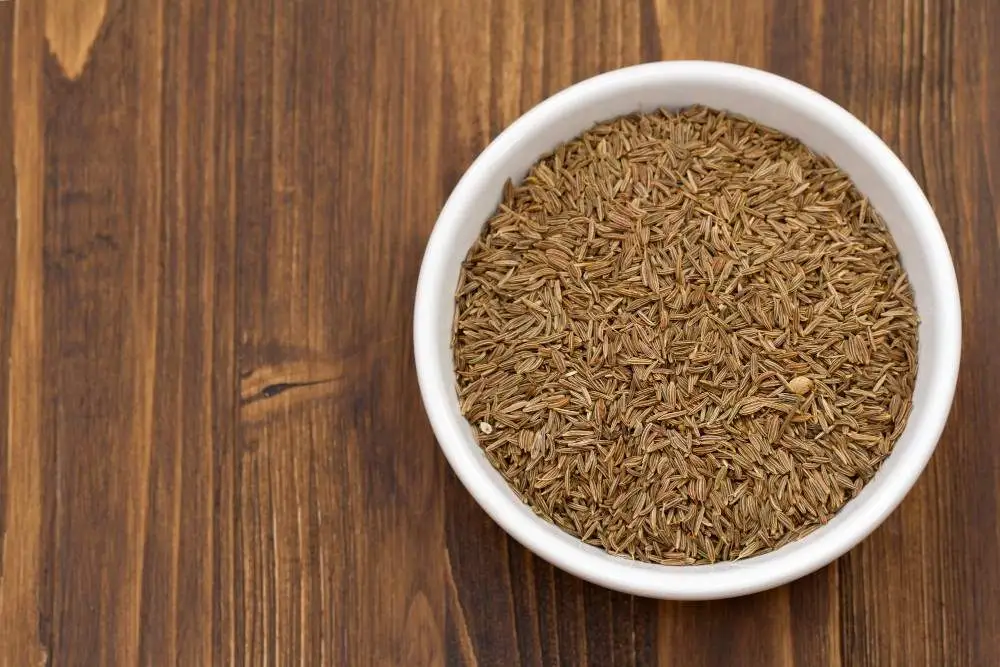Thousands of years ago, caravans loaded with spices crossed deserts and mountains, carrying treasures that would flavor the world. Among the most prized was cumin, a seed so valuable it was once used as currency. Ancient Egyptians placed it in tombs, Romans used it in their kitchens, and Indian households still consider it a daily essential. From medicine to meals, cumin seeds have traveled through history as a humble yet powerful spice that continues to shape cuisines and cultures today.
🔎 Tiny Streaks of Flavor – What Do Cumin Seeds Look Like?
Cumin seeds (Cuminum cyminum) are elongated, ridged seeds about 4–6 mm long. Their color ranges from light brown to dark earthy brown, and they carry a distinctive, warm aroma that is instantly recognizable. Their taste is earthy, nutty, and slightly bitter, leaving behind a lingering sharpness that enhances almost every dish.
🌍 Where It All Began – Origin of Cumin
Cumin is native to the eastern Mediterranean and South Asia, particularly regions covering present-day Iran, Syria, Turkey, and India. Historical records show cumin was used in ancient Egyptian rituals, mentioned in the Bible, and later spread through the spice trade to Europe, Africa, and Asia. Today, India remains the largest producer and consumer, with significant cultivation in Iran, Turkey, China, and Mexico.
🌾 Many Faces of Cumin – Varieties Around the World
- Brown/Regular Cumin – the most common variety used worldwide.
- Black Cumin (Shahi Jeera or Kalonji) – smaller, darker, and more intense in flavor.
- White Cumin – rarer, with a slightly milder and sweeter taste.
- Green Cumin – grown in some Middle Eastern regions, prized for its delicate aroma.
🍵 Everyday Magic – How to Use Cumin Seeds
Cumin is one of the most versatile spices in the world:
- Raw or roasted – roasted seeds enhance flavor for spice mixes.
- Ground cumin powder – widely used in curries, soups, and stews.
- Soaked in water – cumin water (jeera water) is a popular digestive tonic.
- Tea infusions – boiled with herbs to relieve bloating.
- Pickles and masalas – an essential in Indian and Middle Eastern spice blends.
- Medicinal tonics – used in Ayurveda and traditional medicine for digestion and immunity.
⚠️ A Pinch Too Much – What Not to Do
- Avoid excessive consumption; too much cumin water or powder may cause acidity or heartburn.
- Pregnant women should avoid very high doses, as cumin may stimulate contractions.
- Essential oil of cumin should not be ingested directly without medical guidance.
- Overuse in cooking can overpower flavors, as cumin has a strong taste.
✅ The Healing Spice – Benefits of Cumin Seeds
- Digestive Powerhouse – stimulates enzymes, relieves gas and bloating.
- Immunity Booster – packed with antioxidants and vitamin C.
- Weight Management – cumin water helps in fat metabolism.
- Blood Sugar Control – beneficial for people with diabetes.
- Iron-Rich – supports healthy blood and energy levels.
- Respiratory Support – helps ease congestion and colds.
❌ Not Without Risks – Drawbacks of Cumin
- Excess intake may cause nausea, dizziness, or headaches.
- Can trigger acid reflux or heartburn in sensitive individuals.
- May interact with blood-thinning or diabetes medications.
- Concentrated cumin oil may cause skin irritation if applied directly.
Sacred Seeds – Cumin in Culture and Tradition
- In Ayurveda, cumin (Jeera) is considered warming and used to balance Vata and Kapha doshas.
- Ancient Egyptians buried cumin with mummies as a symbol of protection.
- In Biblical times, cumin was mentioned as a valued spice and offering.
- In Indian culture, jeera water is a household remedy passed down through generations.
- Across the Middle East and Latin America, cumin is essential in iconic dishes, symbolizing both tradition and comfort.
🌟 Final Scoop
Cumin seeds may be small, but they carry the weight of history, tradition, and healing in every ridge. From sacred rituals in ancient Egypt to grandma’s remedy for indigestion, cumin has remained an unshakable favorite. Sprinkle it on your food, brew it into tea, or sip it as jeera water—however you use it, you’re keeping alive a tradition that has flavored and healed humanity for centuries.

